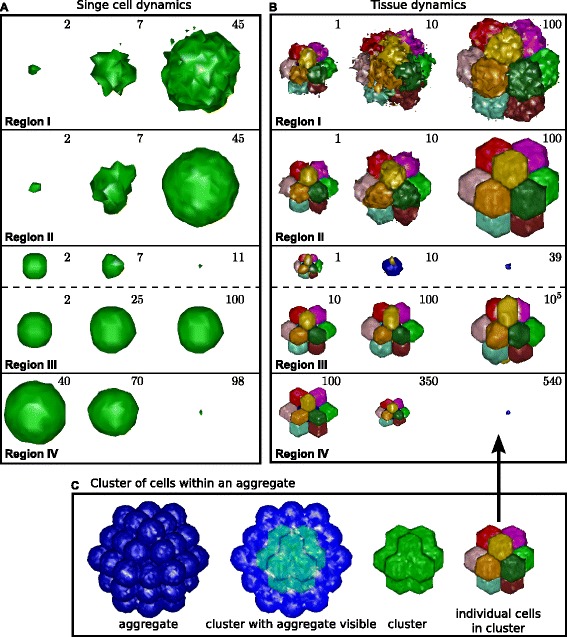Figure 9.

3D CPM simulations of single cells and tissues, within the four qualitatively different regions.(A) Single cell dynamics. All simulations used a 12th level neighbourhood () and V=5,000 (R v=10.6); S=500 (); λ v=50; λ s=25 (); and T=10,000. The J-value was modified to set τ: In region I, J=−55,000 (); in region II, J=20,000 (); in region III, J=1,000,000 (); and in region IV, J=1,400,000 (). Initial radii are: region I and II, r=1; region III, top, r=4; region III, bottom, r=5; region IV, r=30. (B) Tissue dynamics. Shown are 13 individual cells located within a larger aggregate of cells (C). All parameters are the same as in (A), except for the J-values to set τ to be within the right zones (since the zone boundaries are different for spherical and rhombic dodecahedronal cell shapes). Note that , capturing the fact that in the CPM formalism the contribution by J to the interfacial tension along cell-cell boundaries — but not cell-medium boundaries — is shared between neighbouring cells. In region I, J=−65,000 (); in region II, J=20,000 (); in region III, J=900,000 (); and in region IV, J=1,400,000 (). Initial radii are: region I and II, r=5; region III, top, r=3; region III, bottom, r=5; region IV, r=20.
